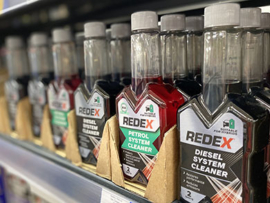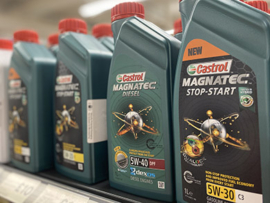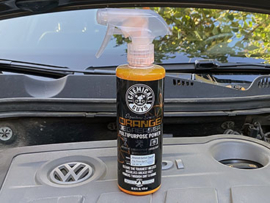- 1. Fixes for OBD-II Code P0421
- 2. Related DTCs to P0421
- 3. FAQs
- 4. How much does it cost to fix the code P0421?
- 5. Can I still drive with the P0421 code?
- 6. Is it OK to drive with a bad oxygen sensor?
- 7. What are the 3 most leading failures of a catalytic converter?
- 8. How do you unclog a catalytic converter without removing it?
This trouble code (DTC) tells about a potential issue with the efficiency of the catalytic converter on Bank 1 of the vehicle’s exhaust system. The catalytic converter serves a vital function in mitigating harmful emissions by transforming pollutants into less detrimental substances. And when it comes to this P0421 DTC, it indicates that the catalytic converter on the side of the engine marked as Bank 1 is not performing within the expected parameters. When the efficiency of the catalytic converter falls below the predetermined threshold, as indicated by the code P0421, it suggests that the converter may not be effectively carrying out its emissions-reducing function.
More about the code
There are several potential causes for a P0421 code, ranging from a failing catalytic converter to issues with oxygen sensors, exhaust leaks, or engine misfires. It’s crucial to conduct a thorough diagnostic process to pinpoint the root cause of the problem accurately. Addressing the underlying issue is essential not only for emissions compliance and passing emissions tests during inspections but also for ensuring optimal engine performance and longevity.
Fixes for OBD-II Code P0421
To go ahead with fixing this code’s roots and causes, a proper diagnostic and preparational step should go first. As a guideline for addressing the issue, follow these general steps:
- Diagnostic Inspection. Conduct a thorough diagnostic inspection to identify the root cause of the P0421 code. This may involve checking for exhaust leaks, examining the condition of oxygen sensors, and assessing the overall health of the catalytic converter.
- Oxygen Sensor Inspection. Inspect the oxygen sensors, especially the upstream (pre-catalytic converter) and downstream (post-catalytic converter) sensors. Faulty sensors can contribute to improper readings and trigger the code P0421.
- Exhaust System Check. Examine the entire exhaust system for leaks, cracks, or damage. Any issues in the exhaust system can lead to inaccurate readings and trigger the code.
- Catalytic Converter Assessment. Evaluate the condition of the catalytic converter on Bank 1. Consider factors such as age, mileage, and overall wear and tear before making a decision to replace the catalytic converter with the new one.
- Engine Performance Check. Assess the overall performance of the engine, including checking for misfires or other issues that could impact the combustion process. Address any engine-related problems that may contribute to the P0421 code.
- Clearing Codes and Retesting. After making necessary repairs or replacements, clear the diagnostic trouble codes from the vehicle’s system. Any OBD-II scanner (there are many of them available here) is normally having “erase codes” function. Drive the vehicle through several complete drive cycles to allow the onboard computer to reevaluate the components.
If you are unsure about the specific cause or lack the necessary tools and expertise, it’s advisable to seek professional assistance. Keep in mind that the exact steps and components involved may vary based on the make and model of your vehicle. Always refer to the vehicle’s service manual for specific guidance tailored to your car.
How much does it cost to fix the code P0421?
The cost of fixing the code can vary widely depending on factors such as the make and model of the vehicle, labor rates in different regions, and whether original equipment manufacturer (OEM) or aftermarket parts are used.
By the state of the article had been written, the cost to fix a P0421 code could range from a few hundred dollars to over a thousand dollars. This cost may include the price of the catalytic converter, labor charges for the repair, and any additional parts or services required.
To get an accurate and up-to-date estimate, it’s recommended contacting local automotive repair garage or dealerships. They can provide specific pricing based on your vehicle’s make and model, the severity of the issue, and the cost of parts and labor in your area.
Can I still drive with the P0421 code?
While it is technically possible to drive with a P0421 code, it’s not advisable to do so for an extended period. It’s recommended to have your vehicle inspected and repaired by a qualified mechanic as soon as possible. This is because the catalytic converter plays a crucial role in reducing harmful emissions and costs itself a considerable sum of money. If the converter is not functioning optimally, it may lead to potential damage to the vehicle’s engine over time. This may lead to expensive repairs to get your car done.
Is it OK to drive with a bad oxygen sensor?
It is technically possible but is not recommended to do so. Prolonged driving with a bad oxygen sensor can potentially damage the catalytic converter. The catalytic converter relies on accurate oxygen sensor data to operate efficiently. On the top of this, oxygen sensors play a crucial role in monitoring and optimizing the air-fuel mixture in the engine.
What are the 3 most leading failures of a catalytic converter?
The three most common failures of a catalytic converter are clogging (blockage), overheating and catalyst poisoning. Explaining more specifically, over time, a catalytic converter can become clogged or blocked due to the accumulation of contaminants. They normally are unburned fuel, oil, or coolant. Overheating of the catalytic converter can result from unburned fuel entering the exhaust system, a misfiring engine, or other issues causing excessive heat. Overheating can lead to internal damage and reduced efficiency. Catalytic converter “poisoning” means it being exposured to certain contaminants, such as lead, phosphorus, or silicon. They can “poison” the catalyst within the converter, reducing its ability to facilitate the necessary chemical reactions for emission control.
How do you unclog a catalytic converter without removing it?
Unclogging a catalytic converter without removing it is a challenging task, and it’s important to note that attempting to unclog it may not always be successful. If your catalytic converter is severely clogged, damaged, or malfunctioning, it is generally recommended to replace it for optimal performance. However, if you still want to attempt to unclog it, here are a few methods:
- Catalytic Converter Cleaner. These products are designed to break down carbon deposits and other contaminants that may be causing a partial blockage. Follow the instructions on the cleaner product carefully.
- Highway Driving. Take your vehicle for an extended drive on the highway. Frequent acceleration and deceleration during highway driving may create a pulsating airflow that could help dislodge some deposits.
- Professional Cleaning Services. Some auto garages offer professional cleaning services for catalytic converters. They use specialized equipment to flush out deposits. However, this method may not be suitable for severely clogged converters.
It’s important to understand that these methods may only provide temporary relief or may not work at all. If your catalytic converter is significantly clogged or damaged, replacing it is often the most effective solution. Note, that using improper methods or additives could potentially cause more harm to the converter or other components of the exhaust system.
We do an efforts to find, research and recommend the best products. So, we may receive commissions from purchases that you make after following the links in our product reviews.








Leave A Comment